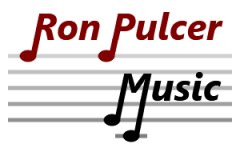This tune by English composer Edward Elgar was composed as a march. So it is fitting to have a 2/4 time signature. The two beat measures are to be played at a comfortable walking pace as if you were playing for high school and college graduates to line up in a procession towards receiving their diplomas.
The first 16-bar section begins to repeat again, with a slightly different ending. So the last four measures of the first two 16-bar sections are different. Knowing where there is repetition in the melody and chords can help you to learn and memorize this tune more quickly. The third section is shorter at 8 bars.
Notice that the last phrase of melody is in an octave lower than the rest of the melody. This song is often repeated as necessary to accommodate the number of students graduating. Hence, upon repeat of the melody, the first note is an octave higher than the previous ending note and really stands out! This helps to continue the momentum of this processional tune.
Chords used in this song
These chords are displayed in the order they first appear in the music.









Melody tablature with chord accompaniment








































